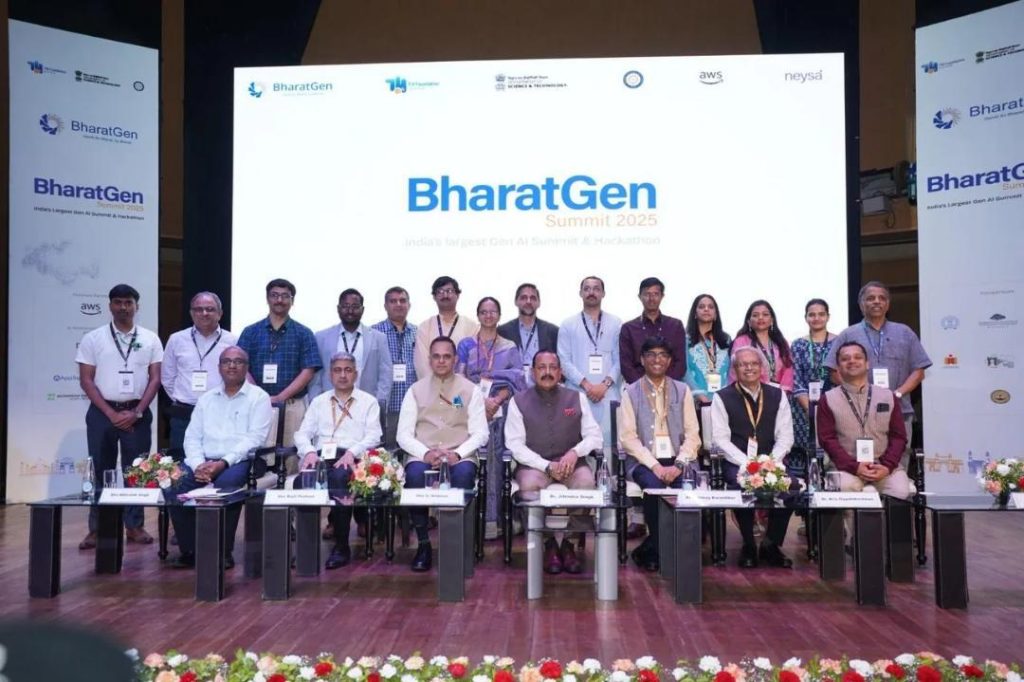
India Launches First AI Model for Understanding Complex Documents
In a significant breakthrough, India has launched its first vision-language AI model, Patram-7B-Instruct, capable of reading and analyzing scanned and handwritten documents in Indian formats. Developed by the International Institute of Information Technology, Hyderabad (IIIT-Hyderabad) and the Indian Institute of Technology, Bombay (IIT-Bombay) under the BharatGen initiative, this open-source model is designed for public use and is poised to revolutionize the way we approach document analysis in India.
The Patram-7B-Instruct model is a significant achievement for the country, as it can accurately read and understand documents in various Indian languages, including Bengali, Gujarati, Hindi, Kannada, Malayalam, Marathi, Punjabi, Tamil, Telugu, and Urdu. This model is not only capable of reading printed texts but also handwritten documents, making it an essential tool for digitizing and analyzing complex documents.
The model’s ability to analyze documents in Indian formats is a significant departure from global AI models, which are often trained on datasets from Western languages and may struggle to understand documents in Indian languages. Patram-7B-Instruct, on the other hand, is specifically designed to tackle the complexities of Indian languages and formats, making it an invaluable resource for institutions and organizations that deal with large volumes of documents.
The launch of Patram-7B-Instruct is a significant step towards achieving digital governance and self-reliant tech initiatives in India. The model has the potential to improve the efficiency and accuracy of document analysis, reducing the need for manual intervention and minimizing errors. This, in turn, can help streamline processes and reduce costs for organizations that deal with large volumes of documents.
The model’s applications are vast and varied. For instance, it can be used to analyze and digitize historical documents, such as ancient manuscripts and records, which are often written in complex scripts. It can also be used to analyze and understand documents related to property disputes, court cases, and other legal proceedings, making it an essential tool for the judiciary and legal professionals.
In addition to its practical applications, Patram-7B-Instruct also has significant implications for research and development in the field of artificial intelligence. The model’s ability to analyze and understand documents in Indian languages can help researchers and developers create more accurate and effective AI models that can be used in a wide range of applications, from natural language processing to machine learning.
The Patram-7B-Instruct model is the result of a collaborative effort between IIIT-Hyderabad and IIT-Bombay, which brought together experts from various fields to develop this innovative AI model. The project was funded by BharatGen, a initiative that aims to promote the development and use of AI and data analytics in India.
The launch of Patram-7B-Instruct is a significant milestone in India’s journey towards becoming a leader in AI research and development. The model’s ability to analyze and understand documents in Indian languages is a testament to the country’s capabilities in this field, and it is expected to have a significant impact on various industries and sectors.
In conclusion, the launch of Patram-7B-Instruct is a significant achievement for India, and it has the potential to revolutionize the way we approach document analysis in the country. The model’s ability to analyze and understand documents in Indian languages is a significant departure from global AI models, and it is expected to have a significant impact on various industries and sectors. As India continues to grow and develop its AI ecosystem, the Patram-7B-Instruct model is an important step towards achieving digital governance and self-reliant tech initiatives.
Source:




